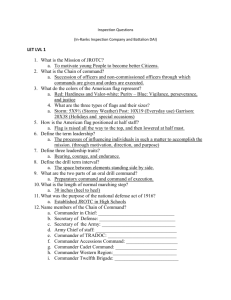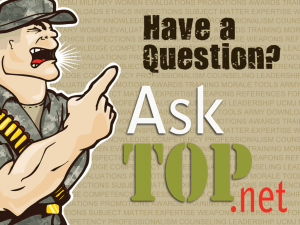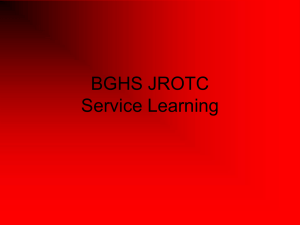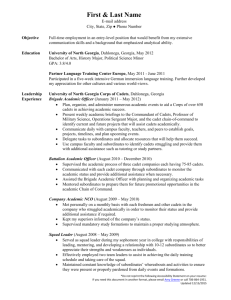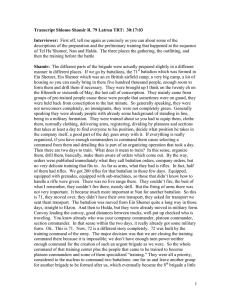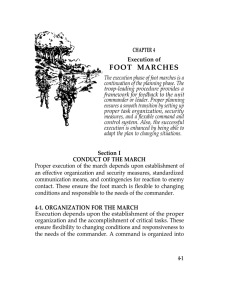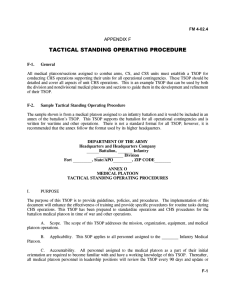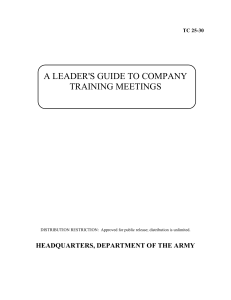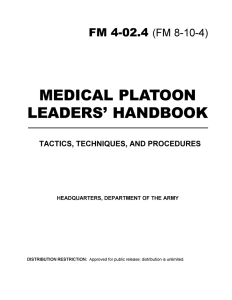Below are more in-depth explanations of each position and the... Battalion Commander: Provides guidance and direction; delegates responsibilities to
advertisement
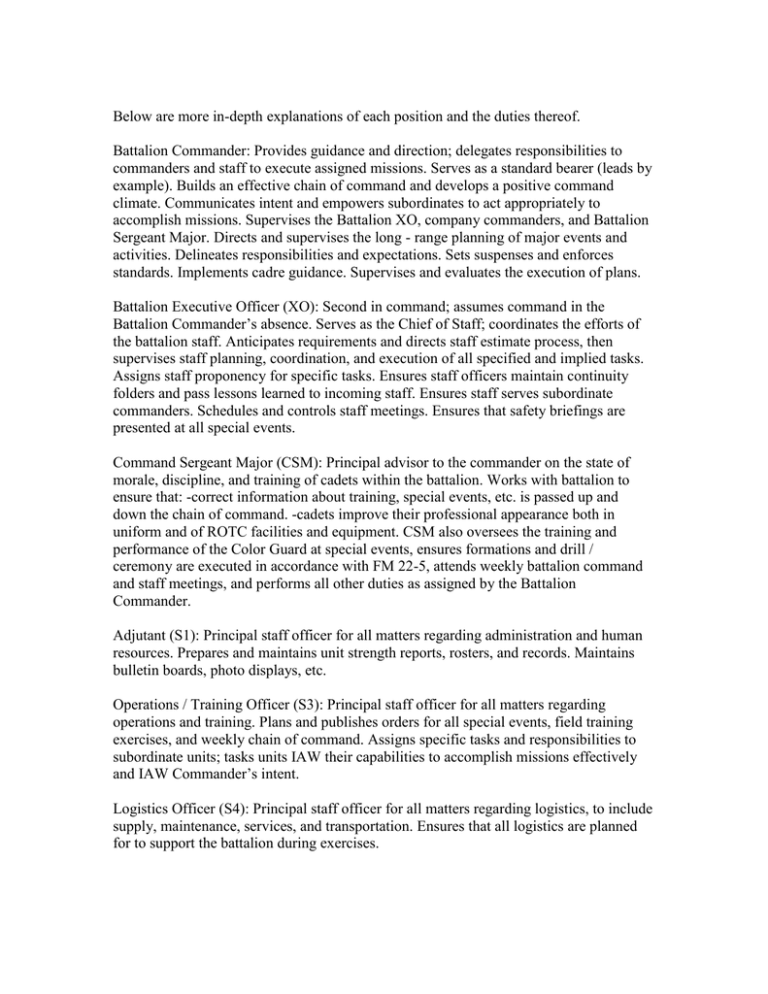
Below are more in-depth explanations of each position and the duties thereof. Battalion Commander: Provides guidance and direction; delegates responsibilities to commanders and staff to execute assigned missions. Serves as a standard bearer (leads by example). Builds an effective chain of command and develops a positive command climate. Communicates intent and empowers subordinates to act appropriately to accomplish missions. Supervises the Battalion XO, company commanders, and Battalion Sergeant Major. Directs and supervises the long - range planning of major events and activities. Delineates responsibilities and expectations. Sets suspenses and enforces standards. Implements cadre guidance. Supervises and evaluates the execution of plans. Battalion Executive Officer (XO): Second in command; assumes command in the Battalion Commander’s absence. Serves as the Chief of Staff; coordinates the efforts of the battalion staff. Anticipates requirements and directs staff estimate process, then supervises staff planning, coordination, and execution of all specified and implied tasks. Assigns staff proponency for specific tasks. Ensures staff officers maintain continuity folders and pass lessons learned to incoming staff. Ensures staff serves subordinate commanders. Schedules and controls staff meetings. Ensures that safety briefings are presented at all special events. Command Sergeant Major (CSM): Principal advisor to the commander on the state of morale, discipline, and training of cadets within the battalion. Works with battalion to ensure that: -correct information about training, special events, etc. is passed up and down the chain of command. -cadets improve their professional appearance both in uniform and of ROTC facilities and equipment. CSM also oversees the training and performance of the Color Guard at special events, ensures formations and drill / ceremony are executed in accordance with FM 22-5, attends weekly battalion command and staff meetings, and performs all other duties as assigned by the Battalion Commander. Adjutant (S1): Principal staff officer for all matters regarding administration and human resources. Prepares and maintains unit strength reports, rosters, and records. Maintains bulletin boards, photo displays, etc. Operations / Training Officer (S3): Principal staff officer for all matters regarding operations and training. Plans and publishes orders for all special events, field training exercises, and weekly chain of command. Assigns specific tasks and responsibilities to subordinate units; tasks units IAW their capabilities to accomplish missions effectively and IAW Commander’s intent. Logistics Officer (S4): Principal staff officer for all matters regarding logistics, to include supply, maintenance, services, and transportation. Ensures that all logistics are planned for to support the battalion during exercises. Public Affairs (S5): Principal staff officer for public affairs and assists with recruiting events. Provides photographic coverage of ROTC events. Plans and executes all special events including the Dining In / Out, BBQs, etc. Company Commanders: Leads by example. Builds a positive command climate. Evaluates the performance of cadets in the company. Responsible for everything that the company does or fails to do. Provides input to battalion planning. Develops company plans IAW higher HQ directives. Ensures cadets are adequately prepared to execute their responsibilities, especially during field training exercises. Recommends deserving cadets for awards and promotions. Company XO: Second in command; assumes command in the CO's absence. Serves as the Chief of Staff; coordinates the efforts of the company staff. Acts as the liaison between the MS IV Company Commander and the MS III staff of the company. Company 1SG: Responsible for ensuring proper accountability is maintained at all times for labs. Acts as the liaison between Command Sergeant Major and the company. Supervises training to make sure it is conducted safely in the spirit of his commander's intent with a high degree of motivation. Platoon Leader (PL): Leads by example. Builds an effective chain of command and develops a positive command climate. Responsible for direct supervision of platoon sergeant and the squad leaders. Provides guidance and direction; delegates responsibilities. Responsible for everything that the platoon does or fails to do. Builds morale and esprit de corps in the platoon. Platoon Sergeant (PSG): Senior Noncommissioned officer in the platoon; supports the PL by training and supervising the NCO chain of command. Assumes command of the platoon in the PL’s absence. Enforces cadet observance of military customs and courtesies. Enforces military bearing and cadet appearance in uniform. Maintains accountability of all assigned personnel and equipment. Squad Leader (SL): Responsible for the health and welfare of assigned cadets. Develops squad into a cohesive unit. Keeps subordinates and superiors informed. Trains assigned cadets and enforces the observance of military customs and courtesies. Inspects assigned cadets military appearance and takes corrective actions. Motivates assigned cadets to participate to the maximum extent. If someone is absent from squad, SL knows why and reports it to PSG.
